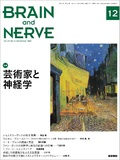Japanese
English
特集 芸術家と神経学
脳科学の視点で読むドストエフスキーとポリフォニー
Reading Dostoevsky and Polyphony from the Neuroscience Perspective
虫明 元
1
Hajime Mushiake
1
1東北大学大学院医学系研究科生体システム生理学
1Department of Physiology, Tohoku University School of Medicine
キーワード:
ドストエフスキー
,
てんかん
,
バフチン
,
ポリフォニー
,
神経科学
,
Dostoevsky
,
epilepsy
,
Bakhtin
,
polyphony
,
neuroscience
Keyword:
ドストエフスキー
,
てんかん
,
バフチン
,
ポリフォニー
,
神経科学
,
Dostoevsky
,
epilepsy
,
Bakhtin
,
polyphony
,
neuroscience
pp.1357-1361
発行日 2021年12月1日
Published Date 2021/12/1
DOI https://doi.org/10.11477/mf.1416201947
- 有料閲覧
- Abstract 文献概要
- 1ページ目 Look Inside
- 参考文献 Reference
ドストエフスキーは生涯てんかんを患い苦しんでいた。一方では彼の作品の中には,てんかんを持った登場人物や,てんかん発作自体が話の中で重要な鍵を握っていることが知られている。脳科学的に彼の病気や作品のことを解釈しつつ,さらに踏み込んでバフチンの提唱するドストエフスキー作品が持つポリフォニーの構造を検討する。対話や物語の重層的な構造としてのポリフォニーに脳科学的の現代的な意義を見出すことができる。
Abstract
Dostoevsky suffered from epilepsy all his life. It is known that the characters with epilepsy and the epileptic seizure held an important key in his story. While interpreting his illness and works from a neuroscience perspective, this short essay goes further and examines the structure of polyphony advocated by Bakhtin about Dostoevsky's works. Neuroscientific significance could be found in the polyphonic structure of his work consisting of the multi-layered structure of dialogue and narrative.

Copyright © 2021, Igaku-Shoin Ltd. All rights reserved.


